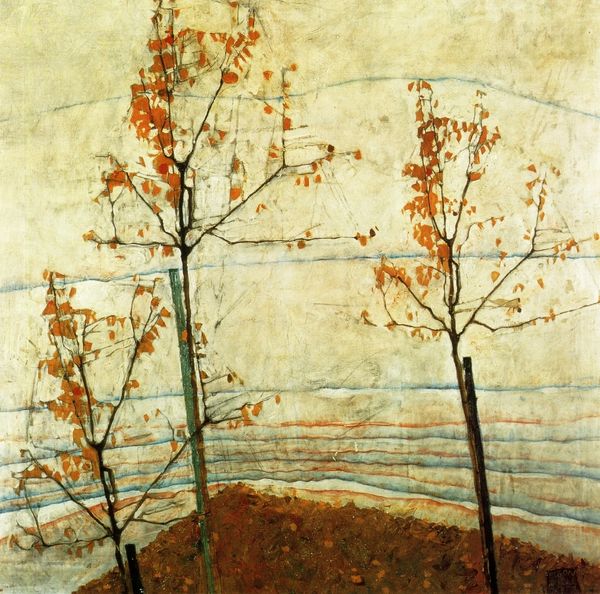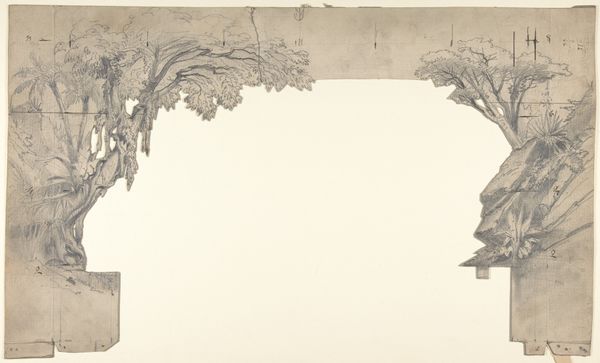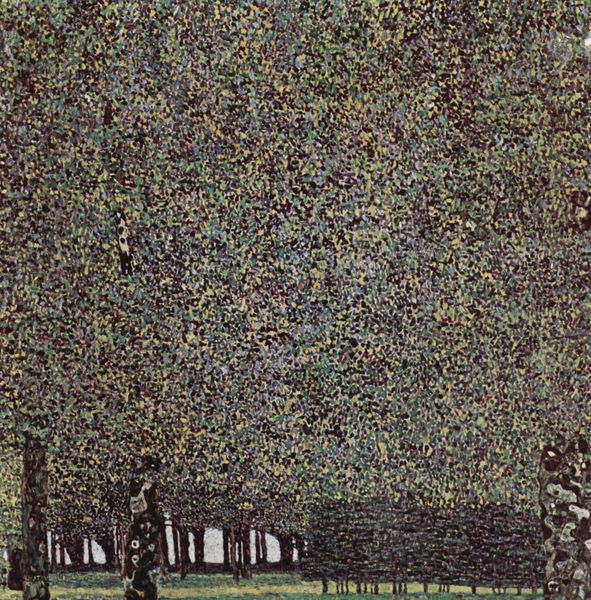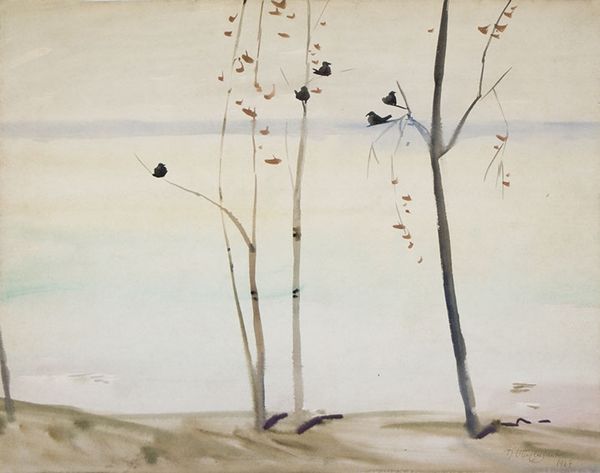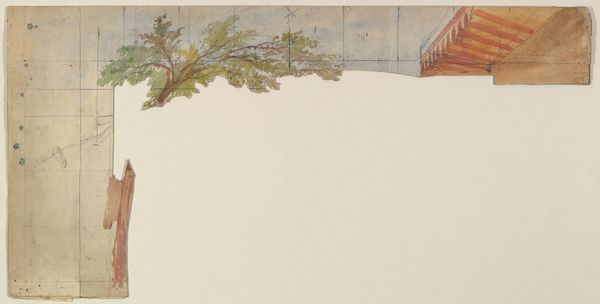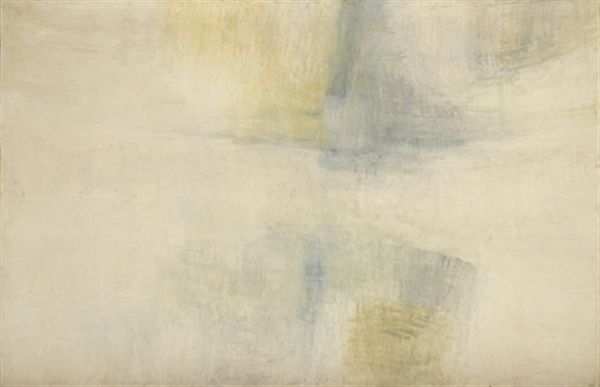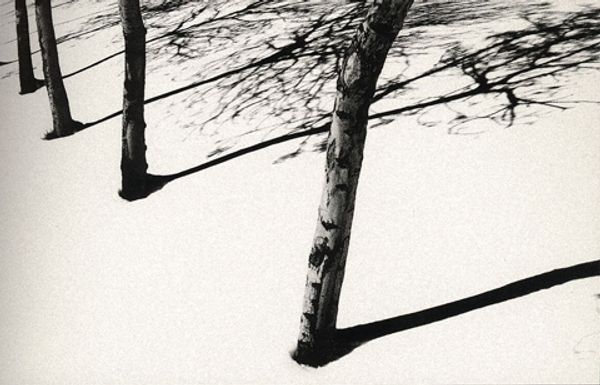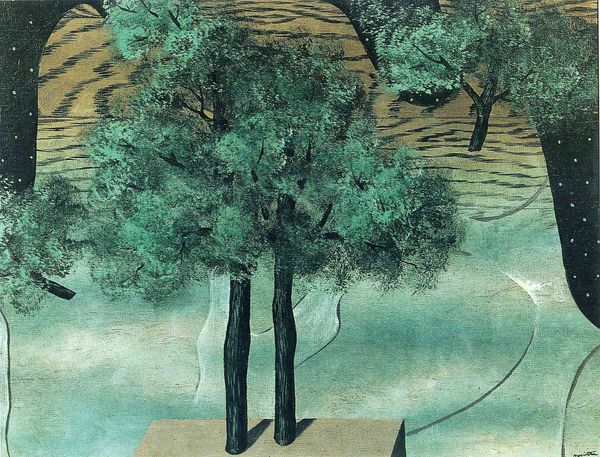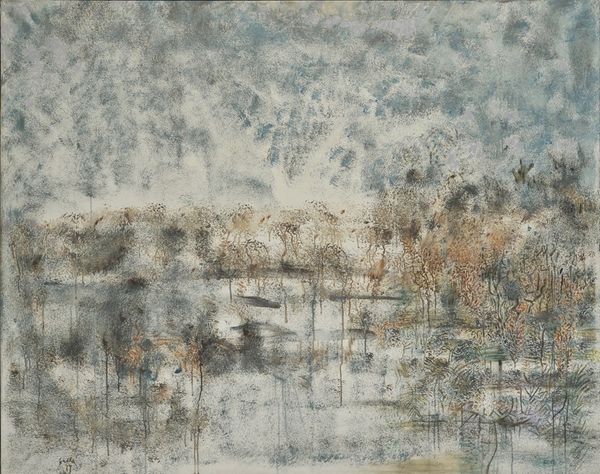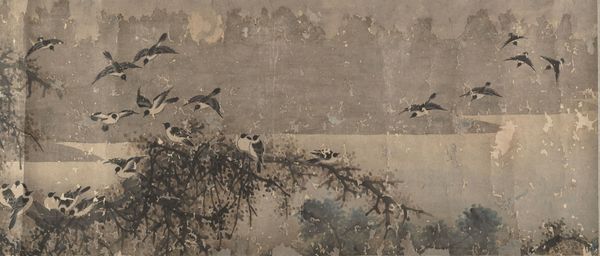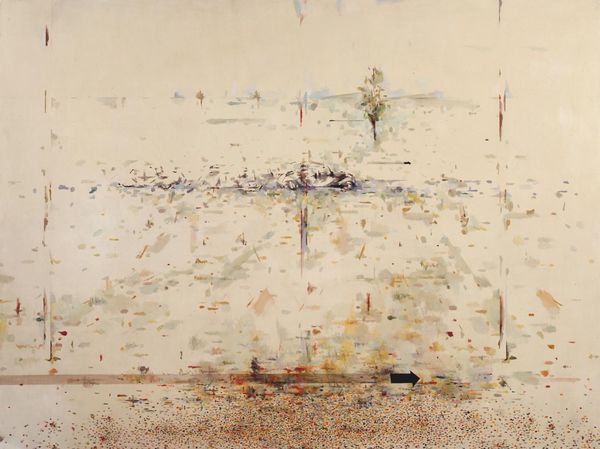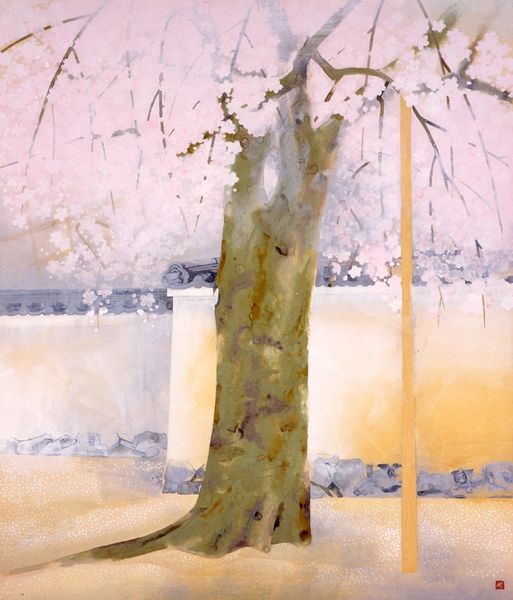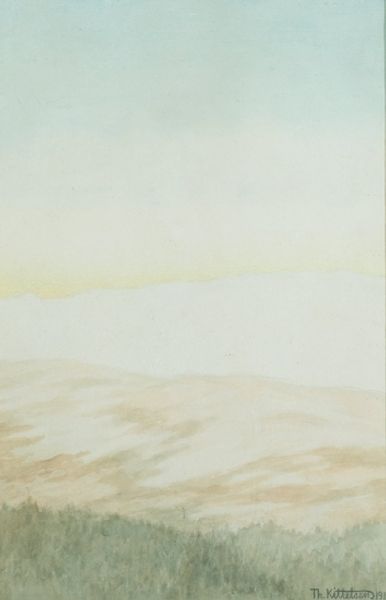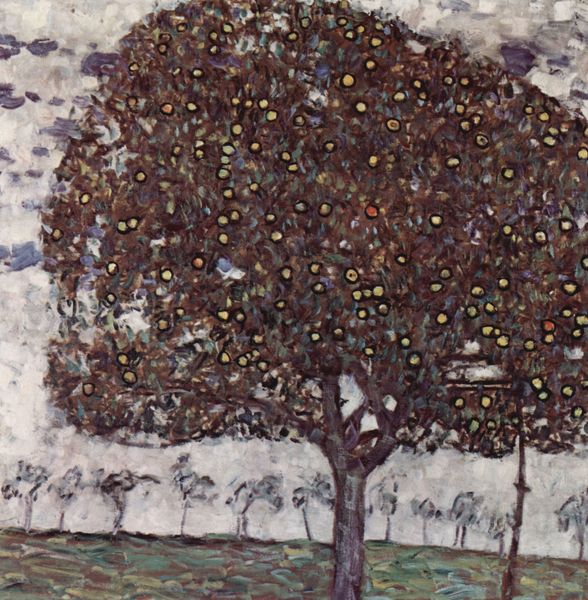
photography
#
contemporary
#
landscape
#
photography
#
line
Dimensions: 89 x 57 cm
Copyright: Abbas Kiarostami,Fair Use
Curator: Today, we’ll be discussing “The Wall #4,” a 2010 photograph by Abbas Kiarostami. Editor: My initial feeling is quiet melancholy. The stark, leafless trees against the muted backdrop evoke a sense of stark isolation. Curator: Indeed. Notice the composition. Kiarostami uses a repetitive, linear structure – the verticality of the tree trunks set against the horizontal band of what seems to be a blurred wall and a shorter hedge, creating a deliberate rhythm. It almost feels minimalist. Editor: I think that formal structure underscores something much deeper. Consider the wall itself. What divides? What is kept in or out? The leaflessness speaks to a moment of vulnerability. There's an element of precarity present here: an uncertain season or socio-political climate being hinted at. The red color at the tree roots could signify repressed violence. Curator: That's a potent reading. Formally speaking, however, that red anchors the entire composition, doesn't it? It pulls your eye down, balancing the sparse, almost invisible branches that reach upward. It's the singular point of contrast against an otherwise muted palette. Editor: Absolutely. And color in photography rarely feels neutral. This looks like a stark depiction of the nature/human divide, where those red roots become both the grounding and also maybe the bleeding out of something, where "natural" elements like those stark trees intersect with an obviously man-made border: the Wall. Curator: You are correct that Kiarostami often played with the nature of boundaries in his films. In this photo, the subtle gradations of tone within the wall's surface are interesting – they deny any sense of true flatness. It suggests layers of history, or even weathering that further blurs the lines. Editor: That’s it, blurring of lines – between inside and outside, freedom and restriction. It pushes us to question those imposed borders. Even now, in 2024, are these constructed social and political 'walls' as firm as they appear to be, and for whom? Curator: I appreciate your focus on these conceptual boundaries. I come away seeing also a powerful and affecting formalism, and in particular that carefully restrained tonal palette. Editor: For me, it will remain an interesting reminder of the stories that spaces, places and walls can silently hold and reflect.
Comments
No comments
Be the first to comment and join the conversation on the ultimate creative platform.
